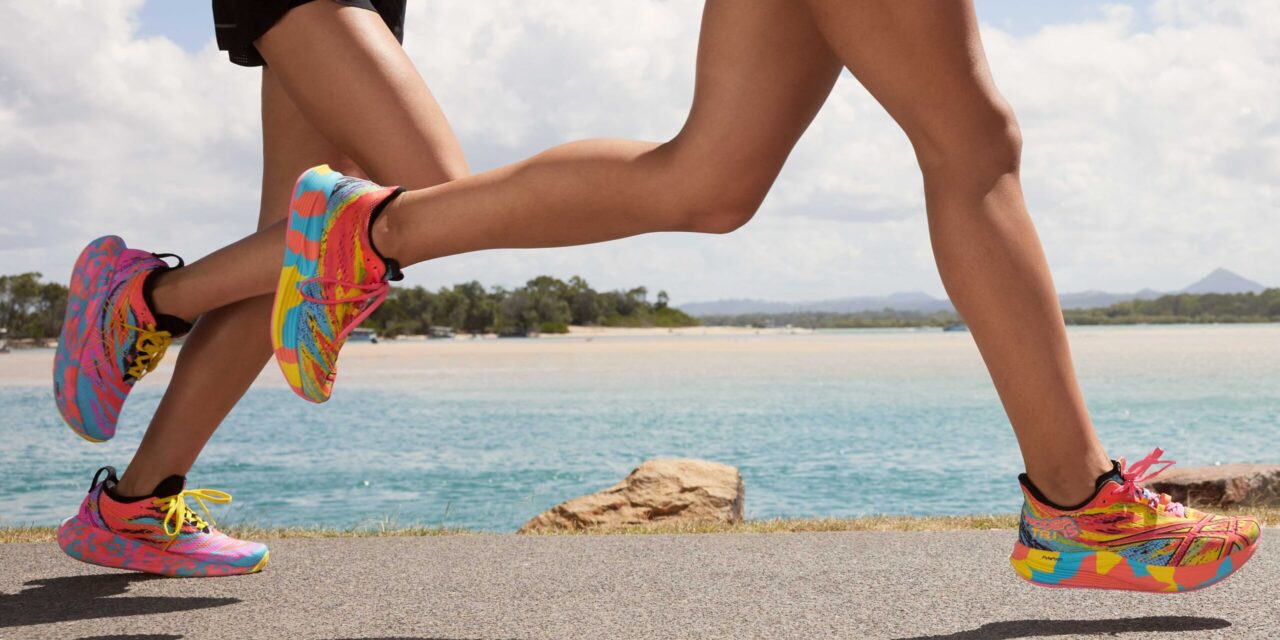 Running is one of the most accessible and effective forms of exercise, offering a wide range of physical and mental health benefits. Whether you’re a seasoned runner or just starting out, choosing the right pair of running shoes is crucial for injury prevention, comfort, and performance. With countless options available in the market, finding the perfect fit can be overwhelming. In this blog post, we’ll discuss essential factors to consider when selecting running shoes to ensure you find the best pair for your workouts.
Running is one of the most accessible and effective forms of exercise, offering a wide range of physical and mental health benefits. Whether you’re a seasoned runner or just starting out, choosing the right pair of running shoes is crucial for injury prevention, comfort, and performance. With countless options available in the market, finding the perfect fit can be overwhelming. In this blog post, we’ll discuss essential factors to consider when selecting running shoes to ensure you find the best pair for your workouts.
- Know Your Foot Type:
- Understanding your foot type is the first step in selecting the right running shoes. There are three basic foot types: neutral arch, low arch (flat feet), and high arch. You can determine your foot type by performing a simple wet test or consulting a podiatrist.
- Neutral arch: Look for shoes with adequate cushioning and support to provide stability and shock absorption.
- Low arch: Opt for motion control or stability shoes with reinforced arch support to prevent overpronation and reduce the risk of injury.
- High arch: Choose cushioned shoes with flexible midsoles to accommodate the natural curvature of your feet and absorb impact effectively.
- Consider Your Running Style:
- Your running style, including foot strike pattern and pronation, plays a significant role in determining the type of shoes that will best suit your needs.
- Foot strike pattern: Are you a heel striker, midfoot striker, or forefoot striker? Select shoes with appropriate cushioning and support to accommodate your specific foot strike pattern and enhance comfort.
- Pronation: Pronation refers to the inward rolling motion of the foot during the running gait cycle. Overpronation, neutral pronation, and supination (underpronation) are common pronation types. Choose shoes with features such as medial support or stability elements to address your pronation pattern and promote proper alignment.
- Assess Your Training Needs:
- Consider the type of running and terrain you’ll be tackling during your workouts. Are you primarily running on roads, trails, or tracks? Different surfaces require different shoe features for optimal performance and protection.
- Road running shoes: Look for lightweight, responsive shoes with durable outsoles and ample cushioning for shock absorption on hard surfaces.
- Trail running shoes: Opt for shoes with aggressive lug patterns, protective toe caps, and durable uppers to provide traction, stability, and protection on uneven terrain and unpredictable surfaces.
- Get Properly Fitted:
- Visit a specialty running store or consult with a knowledgeable footwear expert to ensure you get properly fitted for running shoes.
- Have your feet measured and analyzed for size, width, arch type, and gait mechanics to find the most suitable options.
- Try on multiple pairs and test them by walking or jogging around the store to assess comfort, fit, and performance.
- Prioritize Comfort and Feel:
- Comfort is paramount when selecting running shoes. Pay attention to how the shoes feel on your feet and whether they provide adequate support, cushioning, and flexibility.
- Look for features such as breathable mesh uppers, plush cushioning, padded collars, and roomy toe boxes to enhance comfort and minimize friction and irritation.
- Trust your instincts and choose shoes that feel comfortable and secure during wear.
Conclusion: Selecting the best running shoes for your workouts involves considering factors such as foot type, running style, training needs, proper fit, and comfort. By taking the time to assess your individual requirements and trying on multiple options, you can find the perfect pair that enhances performance, reduces the risk of injury, and makes your running experience enjoyable and rewarding. Invest in quality running shoes that provide the support, cushioning, and durability you need to achieve your fitness goals and conquer every mile with confidence.

